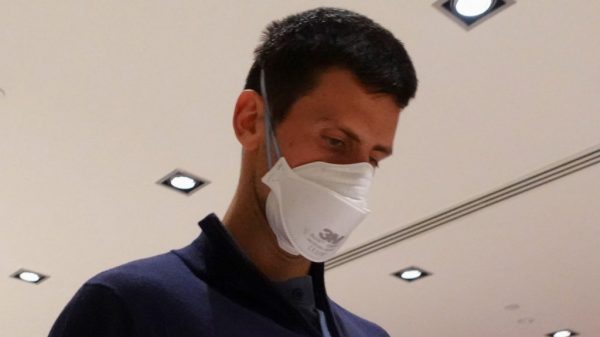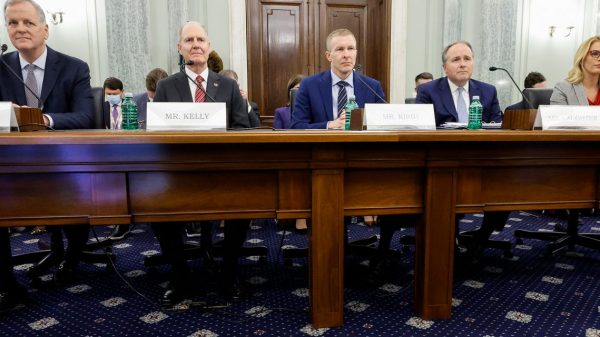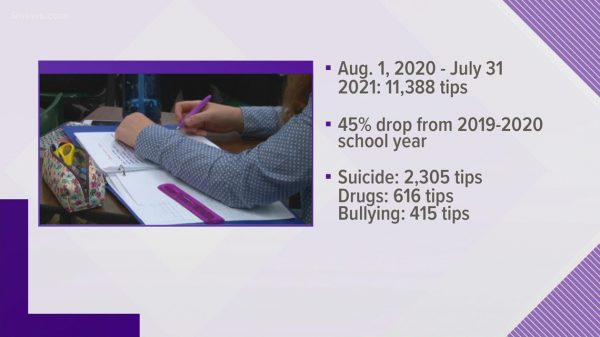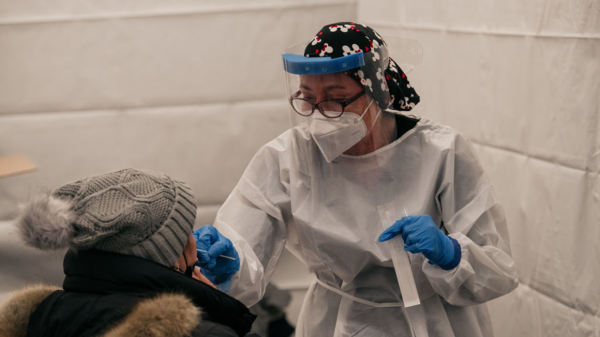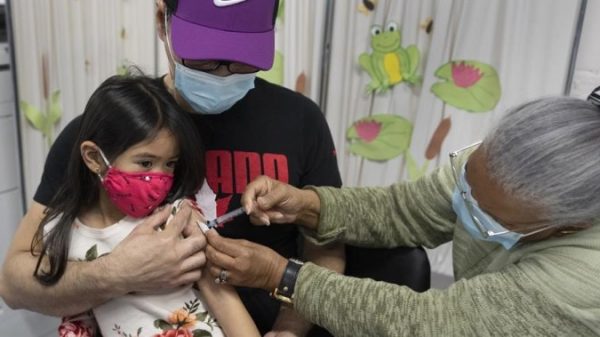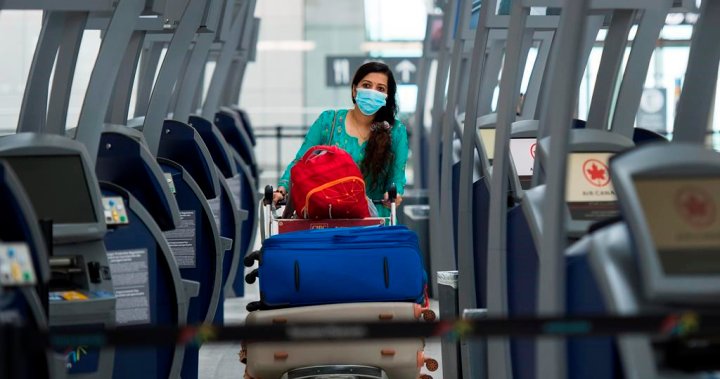For 20 months, Canadians have dealt with an evolving medical landscape that has seen family doctors move from mostly in-person appointments to mainly virtual ones due to COVID-19 concerns.
Now, while some provinces are urging doctors to return to mainly in-person visits, some physicians and patients would rather embrace virtual care, saying the option is filling gaps in accessibility for Canadians struggling to find care.
“I didn’t need to leave my apartment. I didn’t need to travel anywhere,” said Sabrina Brathwaite, a 22-year-old Toronto resident. “I didn’t have to think ‘how am I going to Tetris this into my schedule?’”
Brathwaite — who got a new family doctor just a few weeks prior to the initial lockdown in March 2020 — has had a couple of virtual appointments from her own home. None of the appointments required a physical checkup and were all conducted via a phone call, which she said gave her peace of mind.
“I’m not sitting in the waiting room, that can be kind of stressful because there are people in the waiting room who are actually sick,” she said. “I just needed to sign a form and [now] can avoid getting a cold.”
Read more:
Ontario urges health officials to resume in-person appointments
But, according to Ontario’s chief medical officer of health, the ministry of health, and the College of Physicians and Surgeons, the need for a “virtual care approach” has diminished. In an open letter to family doctors on Oct. 14, the health care groups describe a limit to what virtual care can provide, and that a “standard of care” is hard to match with in-person visits.
The province is not mandating virtual care is removed, but emphasizing that in-person care needs to be the way to move forward,
In different parts of the country, there are evolving stances on how doctors should proceed with primary care. Recently, the College of Physicians & Surgeons of Manitoba updated their virtual care policy to address the changes in primary care by using a “blended model of care balancing in-person and virtual medicine.”
But the message from B.C. is different. Provincial health officer Dr. Bonnie Henry wrote a letter to physicians on Sept. 3 that described the “drawbacks” to virtual care and encouraged doctors to opt for in-person visits, noting that they are safer to do given the high vaccination rates.

Physicians like Dr. Jennifer Kwan, a family doctor in Burlington, Ont. who has become used to answering a phone or video call, think there’s room for both — despite the province urging a return to in-person appointments. Kwan said that telemedicine should have a role in the future of primary care and simply stripping it away, is not necessarily the answer.
In the case of a virtual checkup, oftentimes Kwan said she’s speaking to patients who are looking for prescription refills, want minor symptoms addressed or are looking for reassurance from a medical professional.
“Our priority is always providing excellent patient care and that requires a lot of flexibility in adopting different practices,” she said.
“It (virtual care) does streamline the process for a simple issue.”
Addressing some barriers through technology
The benefits of virtual care appointments are vast, Kwan said. They can address anything from blood work results and ultrasound reports to a conversation about a patient’s diet.
It also leaves room for patients to still make their appointment, should something come in the way of them visiting in person, she said — ultimately saving everyone time and money.
Read more:
Virtual program brings specialists, ER doctors to remote B.C. communities 24/7
Kwan said she has patients who moved to areas like North Bay and Newmarket, but continue to keep her as their family doctor due to the shortage of primary care physicians in Canada. In those cases, virtual care has helped provide a sense of relief while also ensuring they get care from someone they know.
“When people are moving to more remote areas that they’re unable to find a physician, some decide to still remain under my care, but we’re able to manage most of the permanent care by phone and only if needed, they will make the journey down to my office,” she said.
It also worked to alleviate some of the patients’ cost of seeing a doctor, which Kwan said at times be suited for people who work office jobs. Many of her patients are working class who do shift work, so coming to see a doctor during a 9 to 5 would result in a loss of wages, which she’s happy to help avoid.
“We’re able to schedule phone calls outside of those [work] times,” she said. “One call can save them time and money and give them needed assurance.”

Not a one size fits all solution
In some cases, simply securing an appointment with a family doctor can be a challenge given the noted doctor shortages beleaguering Canadians. In Griffin Quigley’s case, the 23-year-old living in Dartmouth, Nova Scotia has been trying to find a family care physician, but to no avail. While he’s seen the advertisements for virtual care health, Quigley doesn’t think someone could evaluate his significant ankle injury over a video call.
“Not having a family doctor is very stressful,” he said. “I just want to be able to see a doctor just to make sure that I’m healthy enough that everything is OK with me.”
Read more:
Increasing need for family doctors in Nova Scotia, as waiting list grows to 78,000
With his job as a caregiver, Quigley said he’s already working overtime. It makes walk-in clinics — which often close by 5 p.m. and require waiting — a challenge for him. Even if he did try to visit, Quigley would have to take time off work to go see someone. [tweak]
“I have to take a day off work, use my banked overtime hours or vacation hours, try and even get out of work to go see a doctor,” he said. “I’ve seen people lining up in advance like it’s Black Friday, people sitting in lawn chairs trying to get access to a doctor.”
While Quigley needs a physical examination at the moment and is unable to get one, he does see the value of virtual care, especially if it allows him to not miss work.
“It can make sense, but we need to get that in-person connection first,” he said.

A review of studies in the British Medical Journal that evaluated patient-doctor connections found that those who had family care physicians for an extended period of time had better outcomes and would live longer.
“Continuity of care by doctors is associated with lower mortality rates,” reads the authors’ notes.
Read more:
Doctor shortages a key election issue in Nova Scotia
The review also notes that “despite substantial, successive, technical advances in medicine, interpersonal factors remain important.”
Brathwaite, who has only visited her family physician in person one time, doesn’t think she could’ve managed virtual care if there was no initial physical meeting.
“I was able to get in for that initial appointment that first time and see my doctor in-person to know the vibe and how we interact in person,” she said.
Amongst the younger generation, Kwan has noticed a reluctance to want to conduct their health matters in an online setting, despite how technologically savvy they may be.
Dr. Birinder Narang echoed similar concerns to Kwan about the overuse of technology which could replace personal connections that are needed in medicine. Narang, a family physician at a community health centre in East Vancouver work with mostly racialized and marginalized people, many of whom acknowledge the importance of seeing him in-person.
“[Technology] can address the convenience part of healthcare, but it also has a very significant risk of disrupting the importance of a longitudinal relationship,” he said.

While those who have grown up in the digital age are already savvier yet at times prefer to see her physically, Kwan is cognizant that virtual care poses significant challenges for her older patients.
“I find that elderly patients tend to suffer if they have trouble hearing over the phone, and they may be unable to send in pictures by email or have problems with technology,” she said.
In Narang’s clinic, they’ve opened up to doing more virtual care over the course of the pandemic as almost half of their patients are seen via telephone or video call. Despite that, they’ve implemented other measures like extending office hours and doing more community outreach to better suit patients’ needs.
“I think just having that [extra] availability, I think it has really been empowering for our patients,” he said.
While Narang thinks “there is value to having an integrated virtual care system”, he thinks Canada needs to go to greater lengths to ensure that every Canadian has a primary care point-of-contact and not solely focus on the technological aspect. With the evolution of care going digital, one thing has became even clearer throughout the pandemic is that doctors should be allowed to make decisions about what is best for people in their care.
“We need to see where this momentum takes us, but be very thoughtful that we can use this technology to empower us to provide better care for our patients,” he said.
View link »
© 2021 Global News, a division of Corus Entertainment Inc.




